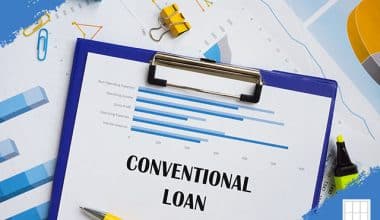When a small business needs a greater unsecured line of credit than what any one credit card can provide, it might employ the credit card stacking strategy of applying for many cards in a precise order. It’s a good option for new and aspiring business owners who need money but can’t get a traditional small business loan. In this article, we explain what credit card stacking is and how to use the strategy. Why not dive in now to get the juicy information?
What Is Credit Card Stacking?
When a business owner’s credit limit on a single credit card is insufficient to satisfy the company’s immediate financial needs, they may resort to the “credit card stacking” strategy. Credit card stacking, if done wisely, can be a useful method of securing capital for your company. it functions similarly to an unsecured line of credit. Your total stack limits also indicate a revolving, unsecured line of credit from which you can make several withdrawals. Credit card stacking can be done independently or with the assistance of a credit card stacking company.
How Does Credit Card Stacking Work?
This method is a viable substitute for a traditional loan or line of credit for a business, and it can be an ideal choice in the absence of collateral. However, most card issuers require credit scores of at least 680 to qualify for a business credit card, as this practice is viewed as high risk due to the use of an unsecured credit line.
There are a few key points about credit card stacking that you should keep in mind:
- Your credit limit is on an ongoing basis: When you use a credit card, you incur a debt to the card issuer and must make a monthly payment until the debt is paid in full. Once you’ve paid back everything you borrowed, you’ll have access to the full credit line once more.
- Interest is charged on every overdue account: Interest will be charged to unpaid amounts from each monthly statement, as it would with any company credit card. Also, Credit card companies often set their own interest rates.
- You need to provide a personal guarantee: If your company can’t pay its debts, the lender can go for your personal property. Personal guarantee-free credit cards, however, are an option worth considering.
- Credit card balances, including interest and fees, must be paid in full when due: Responsible use of business credit cards can pave the way to more flexible financing choices down the road. If you don’t pay your credit card payments on time, it might hurt your credit score and make it harder to get business loans in the future.
- To be eligible, you need not provide collateral: To get approved for an unsecured credit card, you won’t need to put up any collateral.
Best Business Credit Cards for Stacking
The best business credit cards for stacking are those that feature no or low annual fees, lengthy introductory 0% APR periods, low ongoing APRs, and benefits that are valuable to your company. Also, consider the cards’ additional advantages, such as varied opportunities for redeeming incentives and freebies upon signup. The following are the best business credit cards for stacking when using the card stacking strategy:
#1. U.S. Bank Business Triple Cash Rewards World Elite Mastercard®
The following the features of this card:
- Comes with 0% APR for the first 15 billing cycles on both purchases and balance transfers.
- Offers $500 bonus cash back after you spend $4,500 on eligible purchases within the first 150 days of opening your account.
- Has unlimited ongoing rewards: 5% cash back on prepaid hotels and car rentals directly booked in the Travel Rewards Center; 3% cash back on eligible purchases at gas and electric vehicle (EV) charging stations, office supply stores, cell phone service providers, and restaurants; and 1% cash back on all other net purchases.
- Lets you earn a $100 statement credit for recurring software subscription expenses, such as FreshBooks or QuickBooks.
- Has no annual fee.
#2. The Blue Business® Plus Credit Card from American Express
Here are the features of this card:
- Comes with 0% APR for the first 12 months on purchases
- Lets you earn 15,000 Membership Rewards® points after spending $3,000 on eligible purchases within your first three months of membership
- Offers 2x points on the first $50,000 in purchases each year, then 1x point on all purchases thereafter
- Has no annual fee
#3. U.S. Bank Business Platinum Card
These are the features of this card:
- Comes with 0% APR for the first 18 billing cycles on purchases and balance transfers
- Has no annual fee
#4. Ink Business Unlimited® Credit Card
The following are the features of this card:
- Comes with 0% APR for the first 12 months on purchases
- It has no annual fee
- Lets you earn unlimited 1.5% cash back on all business-related purchases
- Offers $750 bonus cash back after spending $6,000 on purchases during the first three months after opening an account
#5. PNC Cash Rewards® Visa Signature® Business Credit Card
Here are the features of this card:
- Comes with 0% APR on purchases for the first nine billing cycles after account opening
- Offers a $400 cash bonus after spending $3,000 in qualifying purchases within the first three billing cycles after opening an account
- Lets you earn unlimited 1.5% cash back on all eligible net purchases
- Has no annual fee
- Has a relatively low ongoing APR compared to most other business credit cards
Who is Credit Card Stacking Best For?
Not everyone needs or wants this type of financial instrument. However, if your company fits into one of these categories, credit card stacking may make financial sense and give you access to the resources you need to keep running and growing. The following are the people the credit card stacking strategy is meant for:
#1. Startups
Banks and credit unions are hesitant to invest in startups because of the higher risk they pose. Despite the fact that this perspective is reasonable given the fact that most firms fail within a few years, it might hinder a startup’s founder on the road to creating a successful business. With the help of credit card stacking, entrepreneurs can quickly and easily gain access to much-needed working money. After the proof of concept has been validated and profits have been increased through scaling, conventional business loans will be more easily obtained. Credit card stacking can help you get started even without access to traditional forms of funding.
#2. Low-revenue Business
For the most part, financial institutions have minimum annual income standards. These criteria are used to determine whether or not a business owner can afford to make their monthly payments on time. This criterion makes it more challenging for enterprises with modest revenues to obtain finance, while certain lenders do have lower entrance barriers. You can receive a line of credit with less hassle because you won’t have to make payments unless and until you really use the money you’ve borrowed. You can borrow at your own speed, allowing you to slow down if you need a break or want to reevaluate your borrowing strategy.
#3. Businesses Who Don’t Qualify for Traditional Loans
Despite the fact that not every company will be approved for a standard loan, the constant requirement for capital remains. Credit card stacking makes it simpler to secure finance than a standard small company loan.
#4. Businesses Who Need Quick Funding
You may have to wait a while for repayment of a conventional loan. It could take up to three months for the U.S. Small Business Administration (SBA) loan funds to be deposited into your bank account. It can take up to that amount of time to get approval. Alternatives to traditional bank loans are available from online lenders, who can deposit your loan amount into your account in as little as a few days. Credit card stacking is a viable alternative if you need access to funds immediately rather than having to wait a few months.
#5. No Assets/Collateral
Collateral is typically required by some loan providers. If the borrower fails to make their loan payments, the lender will be safeguarded by this agreement. Traditional funding options may be limited for companies without collateral, however, credit card stacking services are available without such constraints. A credit card stacking service can help you get approved for multiple unsecured credit cards without a down payment or collateral.
Costs of Credit Card Stacking
If you want assistance getting authorized, you’ll have to pay a fee to a “stacker.” It has been observed that the price for credit card stacking services to apply for credit cards on your behalf ranges from 9% to 11% of the approved amount. What this means is that the credit card stacking service will likely charge you $4,500 if you are applying for a $50,000 line.
It can be expensive, but you’re getting experienced help and a rapid solution to your cash flow issues in exchange for your payment. Many business owners are ready to pay the service cost because they know that more accounts receivable are on the way and the company can survive the short-term liquidity problem. There is also the very real possibility of incurring unmanageable credit card debt if your company venture fails. Cards with a low initial rate may have a substantially higher annual percentage rate (APR) when the introductory period ends.
When applying for a personal or corporate credit card, all major issuers will ask for some form of personal guarantee. The issuer may also pursue the personal guarantor for repayment of the debt if the company defaults on its obligations.
Using Credit Card Stacking Strategy to Finance Your Business
Businesses that require fast financing at 0% introductory rates but don’t qualify for conventional loans can benefit greatly from the credit stacking concept. But before you fully commit to credit card stacking, think about the following:
#1. Know Which Credit Cards You Qualify For
There are often minimal standards set by credit card companies. Some institutions, for instance, may impose a minimum required credit score or other requirements. You shouldn’t apply for credit cards you won’t be approved for, even if credit card companies are more liberal than banks and credit unions. Also, it will be a waste of time and lead to a higher total number of hard credit inquiries.
#2. Understand the Costs and Fees
Examine each credit card’s terms and conditions thoroughly so you know what you’ll be charged. How much does it cost to make a cash advance or settle a late payment? Is there an annual cost for using the credit card? If you ask yourself these kinds of questions, you can steer clear of credit cards with excessive interest rates.
#3. Check Around and Compare Lenders
The rates, periods, and criteria imposed by lenders range widely. If you shop around, you can discover a lender who offers better rates. Lower interest rates may be obtained by exercising patience. If you find a certain lender to be very helpful, you may want to keep a tab open with their details.
#4. Learn How to Manage Multiple Credit Cards
Minimum monthly payments, interest rates, annual fees, and other factors vary for each credit card. Your credit score can drop if you miss even one credit card payment. You should only get as many credit cards as you can keep track of, and you should make it a habit to check in on each one on a regular basis, especially right before payment is due. A note or spreadsheet can be used to keep track of your various credit card balances and their respective due dates.
#5. Get the Ones with the Best Deals and Rewards
Reward schemes on credit cards are designed to attract new customers and keep old ones. Find a credit card with a long 0% APR introductory period and generous rewards for spending. Then, maximize your credit card benefits by applying for cards from issuers who offer rewards to their customers.
#6. Monitor Your Credit Score
Lenders check credit reports to determine whether or not they would provide financing, so keeping an eye on both your personal and company credit is important. If you want to apply for many credit cards, you should pay closer attention to your credit score. You might be able to trace a drop in credit score to a single credit card bill that was paid late. If you pay straight away, you can fix the problem. You can get a better interest rate on future funding and access to more traditional loan options if you work on raising your credit score.
#7. Watch Out for Scams and Predatory Practices
Some lenders are so greedy that they include extra charges in the small print. Cash advances and additional balances on credit cards may be subject to exorbitant interest rates. Some dishonest individuals have been known to establish fake credit card company websites that promise approval regardless of credit history. If something seems too good to be true, it often is. Scammers use bait like this to get you to reveal personal information.
Credit Card Stacking Without Card Stacking Companies
You can avoid paying the stacking service fees that can add hundreds to thousands of dollars to your total interest rate by not using a credit card stacking lender. You can avoid the fees and hassle of working with a dedicated credit card stacking lender by learning how to do it on your own. Here is how to go about it:
#1. Get Prequalified
You’ll need a certain FICO score, a specific business type, a certain amount of monthly revenue (both from the company and personally), and a proven track record of responsible business management to be approved for a credit card. A score of 680 or higher is recommended for optimal performance. If your credit isn’t stellar, a personal guarantor can help the bank feel more secure by agreeing to be responsible for your debts in the event of your default.
#2. Choose Your Credit Cards
One of the most important aspects of credit card stacking is selecting the cards you will use. Your choice of company credit cards should be guided by your spending priorities and the benefits you want to reap from using them. Consider the annual card fee and any applicable APRs when looking for a business credit card.
#4. Submit the Applications
Applying for the best small business credit cards may be done entirely online and will only take a few minutes. When applying for many credit cards, keep in mind that each inquiry into your financial history will lower your credit score. To avoid having your credit score lowered, it’s best to deal with issuers who won’t do a hard draw. Otherwise, applying for too many cards at once can have a negative impact. If you own a small business, you should look into the best credit cards we provide.
#5. Receive Your Credit Cards
Cards are normally mailed out within 7-10 days of approval. To help meet your company’s financial obligations, you can use these as an unsecured credit line. For each card, you must pay at least the minimum payment due each billing cycle to avoid incurring interest charges. Avoid getting into credit card debt by paying off your bill in full each month.
When Is Credit Card Stacking a Good Idea?
Credit card stacking is an option for business owners who need access to working capital but who don’t qualify for more conventional forms of financing. Small firms or those with limited revenues and no assets to pledge may also benefit from this alternative to the conventional small business loan. It’s a viable option for certain people because it can take as little as seven to ten business days from application to card delivery.
There are scams and dubious tactics in the credit card stacking market, so it’s crucial to do your research before working with any company in this space. Don’t be shy about asking questions and making sure you fully grasp how this form of financing functions before deciding to engage with a credit card stacking company.
Is Credit Card Stacking Legit?
Credit card stacking itself is not against the law. The law does not restrict a person from applying for many credit cards at once. However, some businesses risk legal action if they don’t tell their clients that the credit card stacking financing they offer is a source of that money.
Can I Consolidate the Credit Card Limitations from All of My Cards into One?
No, although you can utilize your stacked cards to gain access to a bigger credit limit, you cannot combine all of the limits into one. For the purpose of credit card stacking, you will use credit cards issued by separate banks. The credit limit on your card can vary from one provider to the next. Keeping track of your credit card balances, payment due dates, and credit limitations is essential.
Is It Better to Use the Entire Limit on One Card or Spread My Debt across Several?
If you can avoid putting too much of your credit card debt on any one card, it will be better for your credit score. The ratio of how much of your available credit you are really using is known as your credit usage ratio. If you use a lot of credit, it could lower your personal and company credit scores.
Final Thoughts
Funding your startup or small business with an unsecured line of credit is possible through the alternative financing option of credit card stacking. If you are unable to get an SBA loan but still want to finance your business, this is a viable option. There are alternative possibilities for business loans if you don’t want the hassle of keeping track of multiple credit cards. To obtain a superior replacement for credit card stacking, research the best simple business loans.
Related Articles
- What Is A Good Interest Rate On A Credit Card? (Updated)
- Best Business Credit Cards For Startups In 2023
- Which Credit Card is Right For Me? How to Find Out!!!
- BEST CREDIT CARD COMPANIES IN USA: Top 10 Issuers
- HOW IS APR CALCULATED? Best Easy Guide & All You Need






